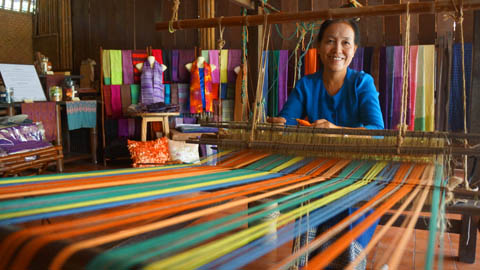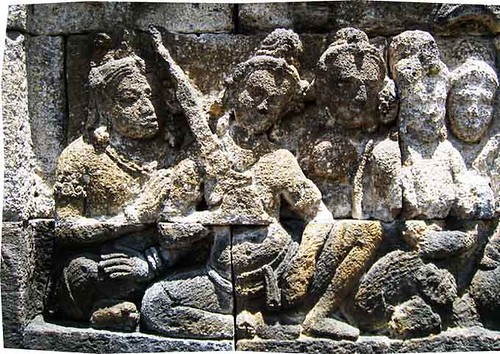
Hand woven Ikats from Sumba by IgoGomez
Traveljunkieindonesia.com – Sumbanese ikat is the most dramatic, and arguably best-executed in Indonesia. It’s very highly prized by collectors, as natural dyes still predominate: earthy orange-red from the kombu tree bark, indigo blue, and yellow hues derived from loba leaves.
Motifs form a pictorial history: a record of tribal wars and an age that ended with the coming of the Dutch – the skulls of vanquished enemies dangle off trees and mounted riders wield spears. A huge variety of animals and mythical creatures are also depicted.
Traditionally, ikat cloth was used only on special occasions; for example, to mark harvest rituals. Less than 90 years ago, only members of Sumba’s highest clans and their personal attendants could make or wear it. The most impressive use of the cloth was at royal funerals, where dancers and the guards of the corpse were dressed in richly decorated costumes.
The deceased was dressed in the finest textiles, then bound with dozens – sometimes hundreds – more, so that the corpse resembled a huge mound before burial.
The Dutch conquest broke the Sumbanese nobility’s monopoly on the production of ikat and opened up a large external market, which in turn increased production. From the late 19th century ikat was collected by Dutch ethnographers and museums (the Rotterdam and Basel museums have fine collections), and by the 1920s visitors were already noting the introduction of nontraditional designs, such as lions, from the Dutch coat-of-arms.
A Sumbanese woman’s ikat sarong is known as a lau. A hinggi is a large rectangular cloth used by men as a sarong or shawl.
Happy Green Travels!
Follow us on Twitter @TravelJunkieID & like us on Facebook.







